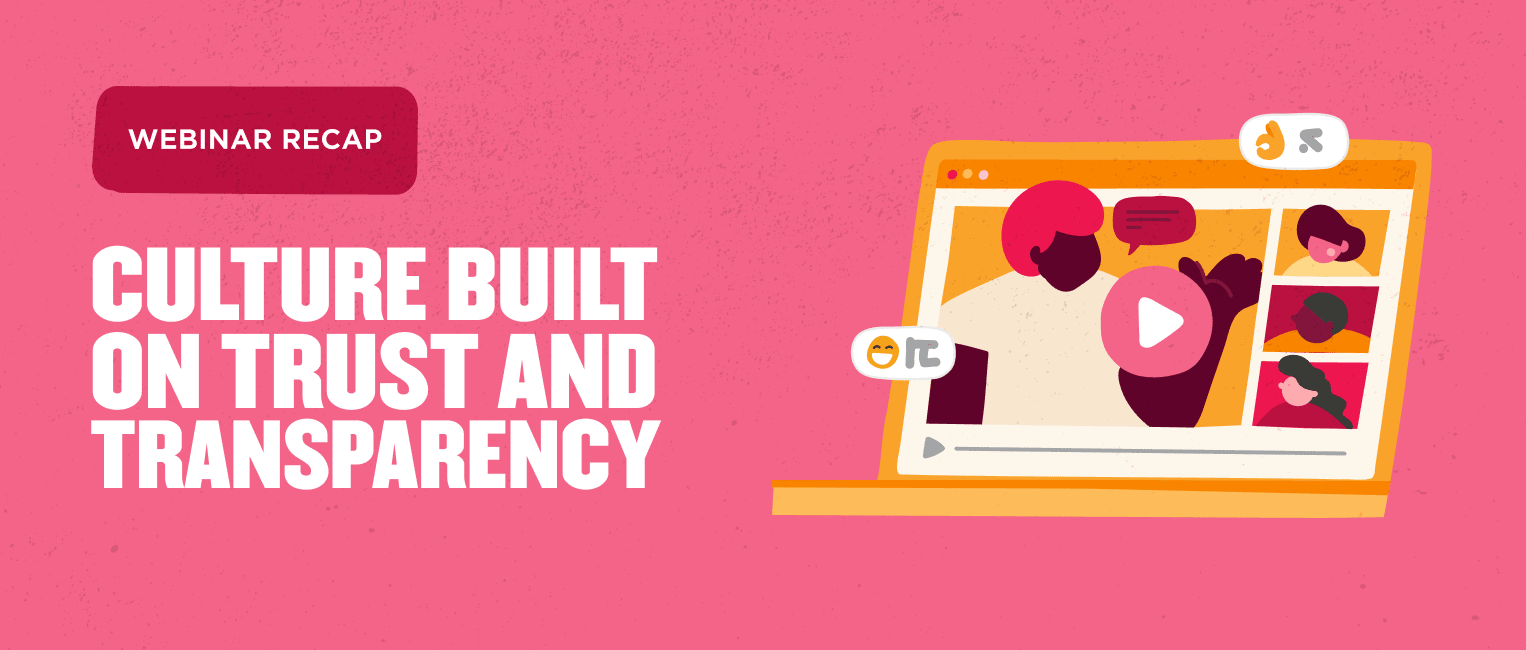For HR leaders building a company culture, the currency of trust and transparency has never been more valuable.
We hosted a webinar in partnership with UNLEASH about how bringing transparency and trust into your practices and making positive cultural shifts can help to improve your organization and enhance your employee experience.
We heard from the following panel of HR leaders who shared their thoughts:
- Toby Hough, Senior Director of People and Culture for EMEA, HiBob
- Lotta Patrickson, Vice President, Global People and Culture, Antler
- Felicia Williams, Vice President of People, TravelPerk
- Kyle Lagunas, Head of Strategy and Principal Analyst, Aptitude Research
Cultivating trust and transparency in the workplace
In the modern workplace, people want to feel valued and trusted to do their jobs effectively in a way that works for them. But they also need to have trust in their leaders and the teams around them.
For HR leaders, the key is creating a level of transparency where trust is the norm rather than the exception. But this requires a deliberate and strategic effort.
“People want the right level of fair compensation, they want good working conditions, but they need to be energized to do their work,” Toby says. “They need to feel like they really belong in their company and they need the trust in the leadership and the direction of the company.”
When your people feel this deep sense of belonging and trust for and from their organization, it can lead to improvements in key areas such as turnover, productivity, and future-proofing.
But cultivating this trust isn’t done overnight. It takes active participation from both your people and your leadership to build the values and ethos of transparency, making these ideals tangible realities through performance metrics and support systems.
Culture is everything for productivity and retention
The success of an organization is deeply connected to its culture. And when a company champions the values of trust and transparency, people can feel more free to take risks, express themselves, and work in a healthy, sustainable way.
Toby highlighted the importance of culture, stating: “We got some good stats from a recent Gallup study where they spoke to over 5,000 employees, and 76 percent answered that culture is either very or extremely important to be effective in their job. It also showed that culture and engagement have been linked to decreased employee turnover and increased performance.
“When both employee engagement and employee wellbeing were high, employee turnover decreased by a whopping 30 percent, according to the same study.”
These statistics show that a culture that prioritizes these values both enhances team member engagement and drives organizational success.
Overcoming challenges to trust and transparency
As the saying goes, trust takes a long time to build but just seconds to break. So naturally, when we’re navigating a path toward a culture infused with trust and transparency, there will be challenges and roadblocks along the way.
Attendees of the webinar revealed that some of the major challenges they face are ensuring that there’s alignment between their stated values and subsequent actions, bringing all business leaders and global sites together.
As Kyle states, “We get stuck between the complexities of managing for our ultimate [culture] goals … and then trying to bring everyone along the way … we [HR] are like evangelists and solution architects at the same time.”
Tackling these challenges requires a nuanced balance and a strategic approach from HR professionals, and how you frame and relay your message is especially key.
By clearly and effectively articulating your core values, you can make a transformative impact on how that message is received by everyone throughout your organization.
“Storytelling is such a powerful tool for transparency that feels real—it feels authentic, and it feels genuine,” Felicia stated. “For example, talking about examples of when you were blindsided with something as a manager and how that made you feel. Would you want to do that to a new joiner? No? Okay, then these are some of the steps that you can take to make sure that you are always communicating effectively with them.”
Recommended For Further Reading
A roadmap for HR leaders
For HR leaders looking to foster a culture of trust and transparency, the experts highlighted a number of steps you can take:
- Involve your people. Engaging your people in the development and continual improvement of your culture ensures that your organization’s values and vision resonate with everyone.
- Get leadership buy-in. To get the full effect, your culture must run right the way through your company from top to bottom. A big part of this is having your leaders embody and exemplify a trusting and open environment by sharing insights and strategies with the team and being open about challenges and successes.
- Ask for and act on feedback. Regularly soliciting and actioning feedback from your people helps you keep your culture up-to-date and relevant. As a bonus, by taking your people’s opinions on board you can show that you value and respect their input.
- Embrace a flexible and inclusive approach. For HR leaders, it’s important to adopt a flexible, inclusive approach to address the unique needs of a diverse workforce.
The power of trust and transparency
Trust and transparency are great starting points for HR leaders who want to navigate the cultural needs and requirements of a modern workforce.
From boosting engagement and productivity to improving the employee experience for your people and ultimately improving your ROI, embracing a culture based on these values can bring a plethora of benefits.
This journey, although challenging, paves the way for an organization that is built on trust and respect, and can help propel you toward success.
This article is based on the presentation “Triumphant transparency: Cultural shifts for ROI.” Watch the full webinar to learn how embracing transparency can benefit your organization.


